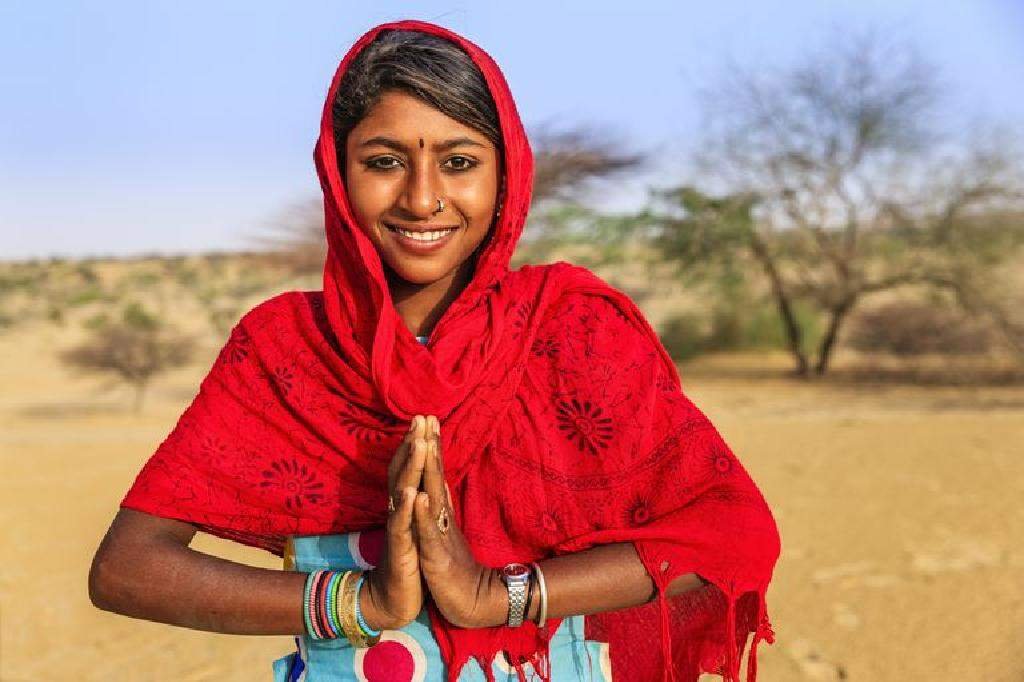India is a land rich in traditions, customs, and cultural symbols, each carrying profound meaning. Among these, Namaste holds a special place as a traditional greeting that signifies respect, humility, and goodwill. This simple yet powerful gesture has been an integral part of Indian culture for centuries and continues to be widely practiced in daily interactions, religious ceremonies, and global settings. This article explores the significance, history, philosophy, and relevance of Namaste in Indian culture, highlighting its spiritual, social, and global impact.
The Meaning and Origin
Namaste, derived from Sanskrit, is a combination of two words: “Namaḥ” (bow) and “te” (to you), which translates to “I bow to you.” The gesture involves joining the palms together at the chest level and slightly bowing the head, signifying respect and humility.
Rooted in ancient Indian scriptures, Namaste is more than just a greeting; it carries spiritual and philosophical significance. It acknowledges the divine presence in every individual and fosters a sense of unity, peace, and mutual respect.
Cultural and Religious Significance
It is deeply embedded in Indian traditions, religion, and philosophy. It holds a sacred meaning in Hinduism, Buddhism, Jainism, and Yoga, emphasizing humility and the recognition of the divine spirit within all beings.
- Hinduism: The concept of Atman (soul) in Hindu philosophy believes that the divine exists within every individual. By saying Namaste, one acknowledges the divine essence in the other person.
- Buddhism and Jainism: It is a symbol of non-violence, peace, and spiritual connection.
- Yoga and Meditation: In Yoga, it is often used as a gesture of gratitude and respect towards the teacher, fellow practitioners, and the self.
Social and Practical Significance

Apart from its religious and philosophical aspects, Namaste plays an essential role in Indian social etiquette:
- A Sign of Respect: In Indian households, children are taught to greet elders with the double hand gesture, reflecting obedience and reverence.
- A Gesture of Hospitality: In Indian traditions, guests are considered divine (Atithi Devo Bhava), and Namaste is used as a warm, respectful greeting.
- A Symbol of Peace and Harmony: Namaste transcends social barriers and is universally used to express goodwill, making it a common greeting among people of different backgrounds.
In the Modern World
With globalization, Namaste has gained worldwide recognition, especially in spiritual, wellness, and professional spaces. Its popularity has grown in various fields:
- Yoga and Wellness: Yoga practitioners across the globe use the gesture to end sessions as a gesture of gratitude and mindfulness.
- International Diplomacy: Indian leaders and diplomats often greet foreign dignitaries with Namaste, showcasing India’s rich cultural identity.
- During the COVID-19 Pandemic: The pandemic led to a shift towards contactless greetings, making Namaste a preferred alternative to handshakes worldwide.
How the Gesture Promotes Mindfulness and Well-Being
The gesture is not just a greeting but also a meditative practice that promotes inner peace, humility, and positive energy. The act of bringing palms together activates pressure points, harmonizing energy flow and fostering a sense of calmness.
- Encourages Mindfulness: A mindful Namaste enhances self-awareness and presence in the moment.
- Symbolizes Inner Balance: It aligns physical, mental, and spiritual energies.
- Fosters Gratitude: Namaste encourages a respectful and appreciative attitude towards others.
It is a timeless symbol of respect, spirituality, and cultural pride in India. More than just a form of greeting, it embodies humility, oneness, and harmony in human interactions. In an era where digital communication is prevalent, the essence of Namaste reminds us of the importance of human connection, gratitude, and inner peace.
As the world continues to embrace Indian traditions, Namaste remains a universal expression of respect and goodwill, strengthening relationships and promoting a sense of unity beyond cultural and geographical boundaries.












